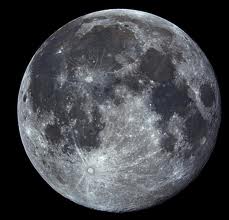
 On Saturday, our “full moon” is going to be what NASA is calling a “super full moon“. Like me, I’m sure you’re baffled but it turns out the explanation is relatively simple.
On Saturday, our “full moon” is going to be what NASA is calling a “super full moon“. Like me, I’m sure you’re baffled but it turns out the explanation is relatively simple.
The moon’s orbit around our planet is elliptical, that is, it’s not a circle; it’s not moving in an evenly spaced manner. Its orbit leads it closer to the Earth then father away so it is not always at the same distance. At its farthest point know as the apogee, it is approximately 406,731 km (252,731 mi) from Earth, at its closest point known as the perigee, it is approximately 364,397 km (226,426 mi). On Saturday, the full moon we are going to see is when the moon is at its perigee so it is, essentially, larger than normal. According to NASA, the last time this happened was in March 1993. The space agency also states that with the moon about 50,000 km closer to Earth than at its apogee, it is going to be 14% larger and 30% brighter. This is dubbed the “perigee moon”.
ScienceCasts: Super Moon
Final Word
Don’t miss it. The next one is slated for 2029.
References
Wikipedia: Supermoon
The term supermoon is not widely accepted or used within the astronomy or scientific community, who prefer the term perigee-syzygy.
Wikipedia: Syzygy
In astronomy, a syzygy is a straight line configuration of three celestial bodies (as the Earth, Sun, and Moon) in a gravitational system. The word is usually used in reference to the Sun, the Earth and either the Moon or a planet, where the latter is in conjunction or opposition. Solar and lunar eclipses occur at times of syzygy, as do transits and occultations. The term is also applied to each instance of new moon or full moon when Sun and Moon are in conjunction or opposition, even though they are not precisely on one line with the Earth.
Wikipedia: Orbit of the Moon
NASA: Super Full Moon
Click HERE to read more from William Belle
Article viewed at: Oye! Times at www.oyetimes.com

Be the first to comment